Seeking the right to euthanasia in Peru
Ana Estrada, a 45-year-old writer, poet and psychologist with a progressive muscular disease, is fighting for the right to die by euthanasia, writes Samantha Schmidt
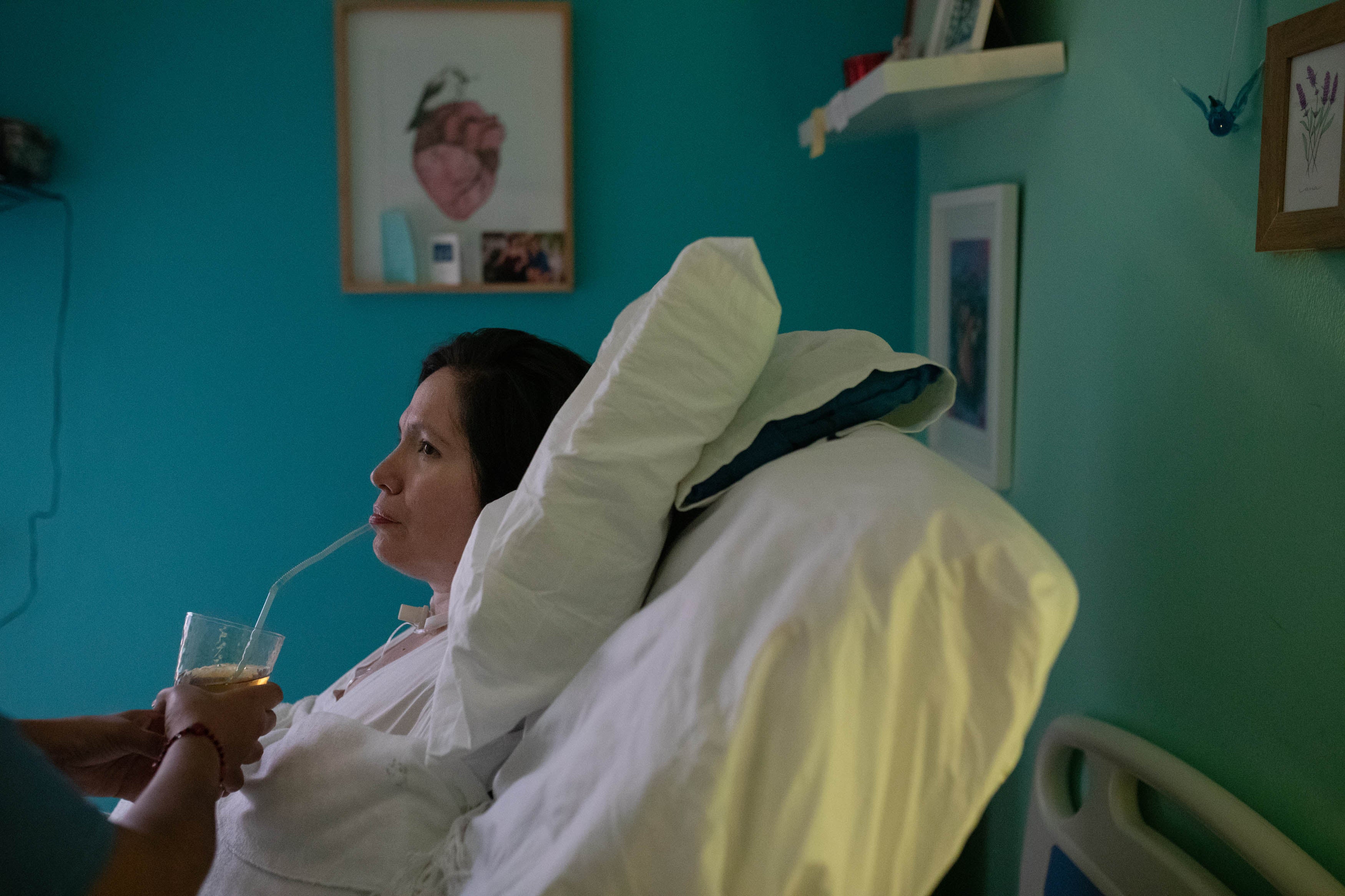
Ana Estrada had rested her lungs for days in anticipation of this moment. Now she lay in bed with her laptop open, facing the people who would decide whether she would legally be allowed to bring her life to an end.
Simply breathing on her own, disconnected from her ventilator, she felt as though she were running a marathon. Today she would have to speak, answering questions from a panel of judges for two hours with the tube in her windpipe shut.
Estrada, a 45-year-old writer, poet and psychologist with a progressive muscular disease, is fighting for the right to die by euthanasia.
For three decades, she has struggled with polymyositis, a condition that has slowly robbed her of the ability to walk, to move her arms, and to breathe on her own for more than a few hours a day. Last year, a constitutional court in Lima ruled in her favor, making her the first and only person to be granted an exception to a national ban on euthanasia, a stunning development in a majority-Catholic country where a doctor can be sentenced to three years in prison for administering euthanasia, and where elective abortion and same-sex marriage remain illegal.
The decision was now before Peru’s Supreme Court of Justice for a final review, and this hearing in mid-January would be Estrada’s last opportunity to speak for herself before the judges would decide.
They would ask questions she’d heard many times over the four years since she began her crusade: Aren’t there other medical treatments she could turn to? If she had made it this far, through 45 years and a successful career, why give up?
“Why would you surrender now,” a judge asked, “and not continue with this fight?”
With her head resting on her pillow, Estrada smiled slightly as she explained, again, what so many people still don’t understand: she doesn’t actually want to die.
Estrada had always dreamed of living alone.
As a girl, she wasn’t interested in getting married or having children. Growing up in a conservative Catholic family and attending a high school run by nuns, she was tired of having values or expectations imposed on her. She wanted to be independent, to travel, to live in her own apartment.
Her time in the ICU showed her what it was like to want to die – to beg to die – and she vowed never to reach that point again
Then she started falling. She began feeling a weakness all over her body, and at 14, she was diagnosed with polymyositis. In late high school, her treatments caused her to become bloated, and she fell into a depression. She retreated from friends and dreaded being seen by her boyfriend, her first love. At 20, she started using a wheelchair – her classmates would help push her across her university campus. By the time she graduated, she needed a live-in assistant.
The last time Estrada took a shower by herself was more than two decades ago. She could use only her right hand to wash her hair, so she would rub the other side of her head against the wall, tears falling down her face. After falling and spraining an ankle, she never again showered without help, she would write in a blog post: “And never again could I feel the texture of my own skin.”
But as her body failed, her psychology studies made her realise how much she was still capable of. She began working at a psychoanalysis clinic and rented an apartment around the corner, living with her full-time nurse and her cat. She eventually saved enough money to buy an apartment blocks from the ocean in Lima’s upscale Miraflores neighborhood.
Then, in 2015, complications from pneumonia sent her to the ICU. She was intubated for six months. What little independence she had left was taken from her. She started relying on a ventilator, a feeding tube and 24-hour assistance from a team of nurses. She quit her job and gave up her cat for adoption. Her parents moved in with her.
She returned to the ICU for a month the following year.
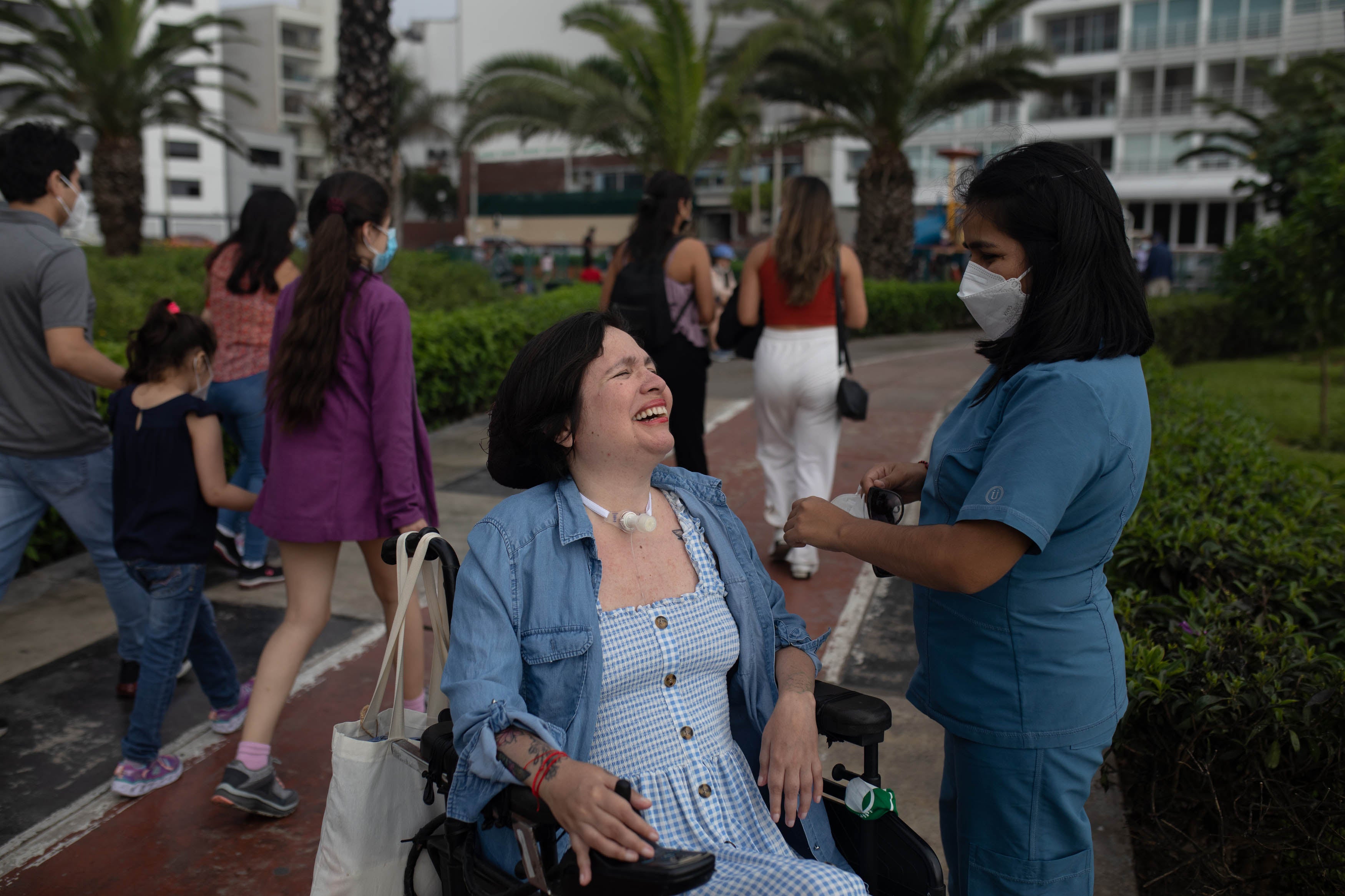
That was when she started considering euthanasia. Her time in the ICU showed her what it was like to want to die – to beg to die – and she vowed never to reach that point again. If the suffering became too much to bear, she wanted to know she had an escape. If she had that right, she thought, perhaps she might never even need to use it.
“What I’m asking is to have the power and the control, and that my life belongs to me – it doesn’t belong to the state,” she said. “That’s what it means to be free. It’s living without fear.”
She began considering her options. If she reached the point at which she wanted euthanasia, she realised, she would have to get a clandestine procedure or travel to one of the seven countries worldwide where the practice is legal. Travel would require the support of a family member, and she was terrified that her loved ones could face prison time if they were caught.
In 2019, she launched her blog about her search for “death with dignity,” and found herself an advocate for the cause. She started working with a lawyer to take her case to court. With Peru’s ombudsman’s office, she filed a lawsuit seeking to stop the government from enforcing Peru’s euthanasia ban in her case. In a historic decision, a court in Lima ruled in her favour. But perhaps more remarkable was what happened next: the three government agencies in the case decided not to appeal.
Many Latin American countries are transforming their laws on social issues amid growing ambivalence over the influence of the Catholic Church in the region. In Colombia, an unlikely pioneer in euthanasia rights, the procedure has been recognised since 1997, and a court last year ruled it could be extended to patients with non-terminal prognoses. Lawmakers in Uruguay, Chile and Argentina have proposed legislation granting access to euthanasia.
But Estrada would wait a year for the Supreme Court to take up her case.
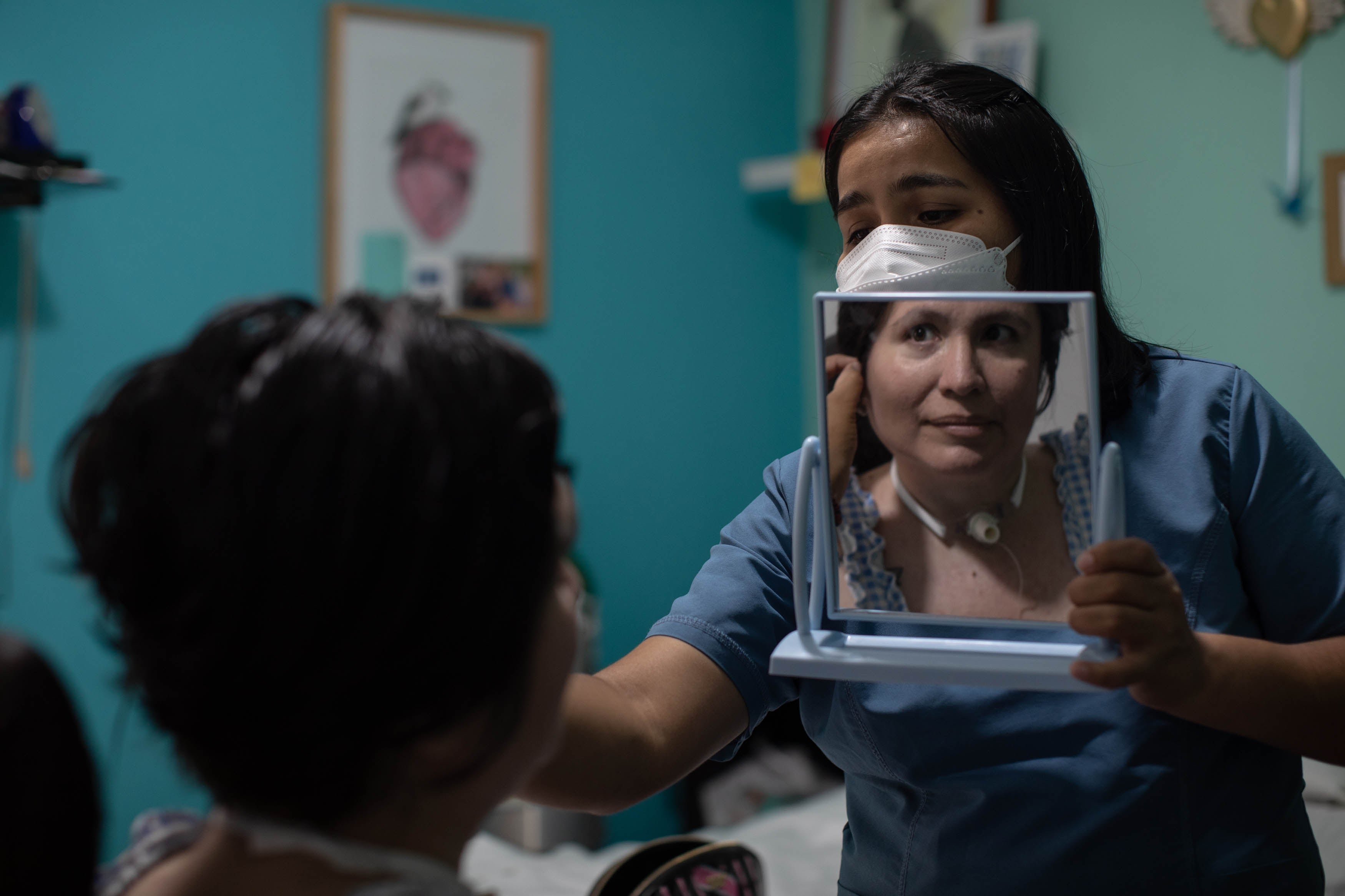
If the panel of judges upholds the lower court’s ruling, the decision could be limited, only applying to her and creating no binding legal precedent for others seeking euthanasia in the country.
And as she awaited a final green light, messages poured in on social media telling her she should “just die already”.
Critics attacked her for getting vaccinated against the coronavirus and voting in Peru’s presidential election, if she was just going to die soon anyway. One presidential candidate, referring to her case, asked why the state should get involved.
“If you want to kill yourself,” he said, “just climb a building and throw yourself off.”
In her apartment’s sunroom, Estrada sat up straight in her wheelchair, a green abortion rights handkerchief tied to the armrest. This is her favorite room, where she can be surrounded by plants and paintings of birds and hear the sounds of people outside. On her laptop stand was a sticker of a nude woman and the words: “Fan of my body.”
She joined a Zoom meeting and saw the faces of friends in New York, Argentina, Venezuela – classmates in a virtual writing workshop she started taking during the pandemic. The workshop had given Estrada a new identity, no longer that of a working psychologist or of just a euthanasia activist. She was a writer.
The teacher asked the students to take 10 minutes to write a few lines about a summer memory. Estrada listened to a song by Cuban artist Silvio Rodriguez and tried to concentrate.
She rested her index finger on the mouse and used the cursor to choose each letter from a keyboard on the screen.
I ask myself, ‘Is that a dignified death for me? I’d be asleep for how many years... producing ulcers on my body, with my family having to see me suffering like that?’
She thought about those last summers when she could still walk into the ocean. She had felt herself getting weaker, the waves crashing against her, her toes curling around the stones in the sand as she tried to keep from falling.
Her classmates took turns reading off their lines and then critiquing them together. As they shared their passages, Estrada continued to fixate on her own, deleting words, adding new ones.
The class dragged on longer than usual, and Estrada became tired. Her nurse moved her to her bed and connected her to the ventilator. When it was her turn, Estrada asked a classmate to read her lines for her.
Her body had deteriorated since she started the class. It had become harder to speak and to breathe on her own. She could use her voice only briefly every few days; now she communicated mostly by mouthing words. But she could still write. As long as she still had strength in her right index finger, she could still write.
The lines she sent her classmate were entirely different from the ones she had started with, a memory of the fog of her childhood in Lima that she both loved and resented.
Estrada told herself to be patient as she listened to the judge’s question. He had congratulated her on her accomplishments, while also questioning why she was giving up. To Estrada, nothing about this four-year campaign felt like giving up.
“It’s not about surrendering,” she responded to the judge, her breathing audible between sentences. “It’s not that I’ve stopped valuing life. On the contrary.”
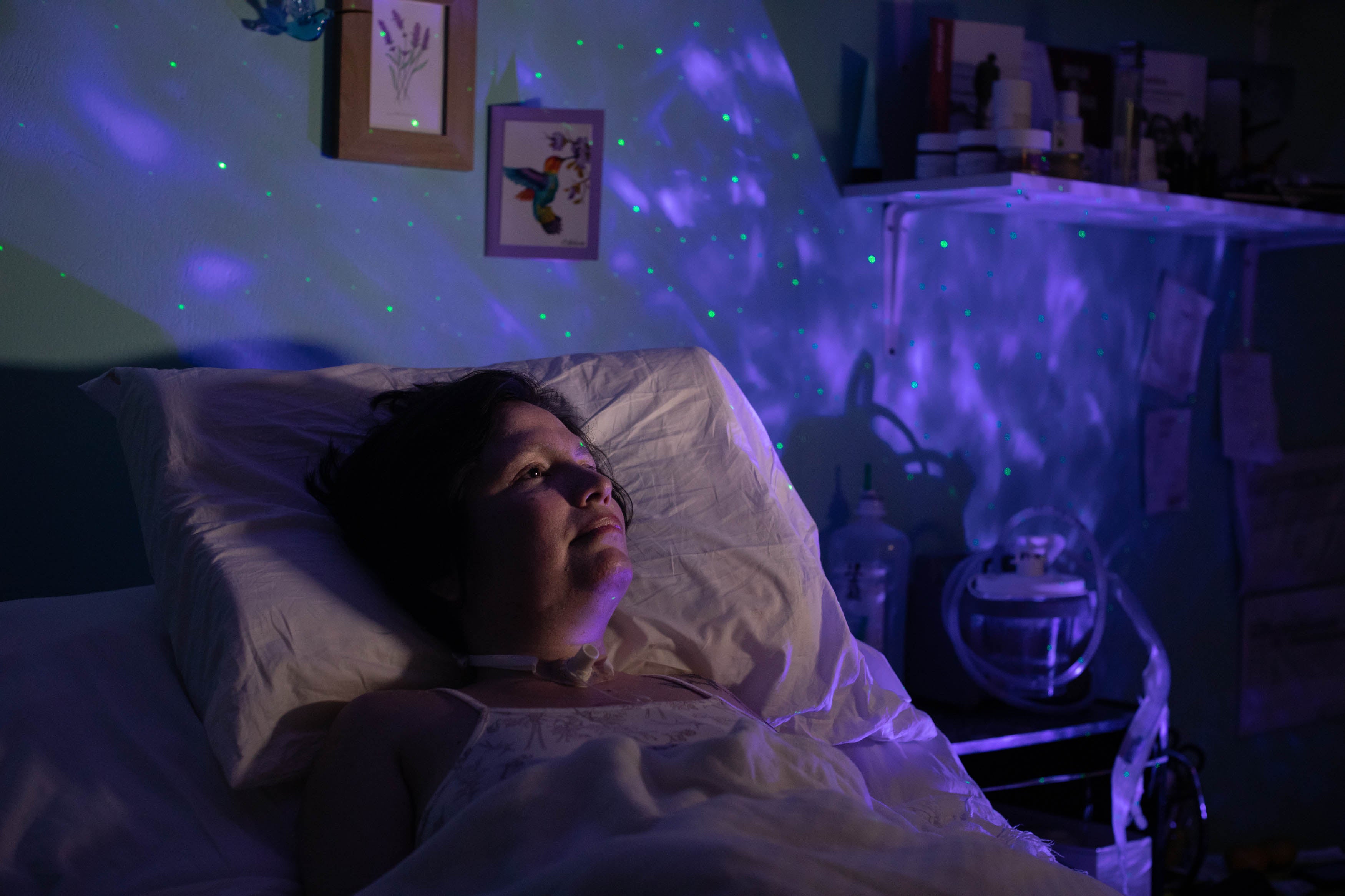
Estrada was asking for this right because she knew what it was like to really live, to help a therapy patient resolve a challenge, to stay out late drinking with friends, to spend her birthdays vacationing at the beach. And she knew what it was like to lose all that.
“I’m not asking you to let me die,” she told the judges. “I’m asking for my right to choose when I want to die.”
The judge asked her what would happen if she continued on palliative care, easing the pain as her condition progressed. At some point, Estrada replied, that would mean she would simply be sedated.
“And I ask myself, ‘Is that a dignified death for me? I’d be asleep for how many years... producing ulcers on my body, with my family having to see me suffering like that?’”
“So what you’re asking for, in some way, is about emotional suffering rather than physical suffering?” the judge asked.
“It’s about dignity,” Estrada said.
Estrada thought back to something she would tell new patients in therapy. Many would see her in a wheelchair and hesitate to open up about their struggles – feeling that they were nothing compared with Estrada’s. She would say suffering cannot be measured: “Limitations are not only physical.”
It might be weeks, or even months, before the judges decided her case. Estrada was in no rush.
When she filed her lawsuit in 2019, she predicted she would want to live only two more years. Now, she had stopped putting a date on it. She didn’t know how many more years she would choose to keep living. She could still write, could still create and learn and speak for herself. But she knew each of those things would only become more difficult.
“There will come a time when I will no longer be able to resist it,” she told the judge.
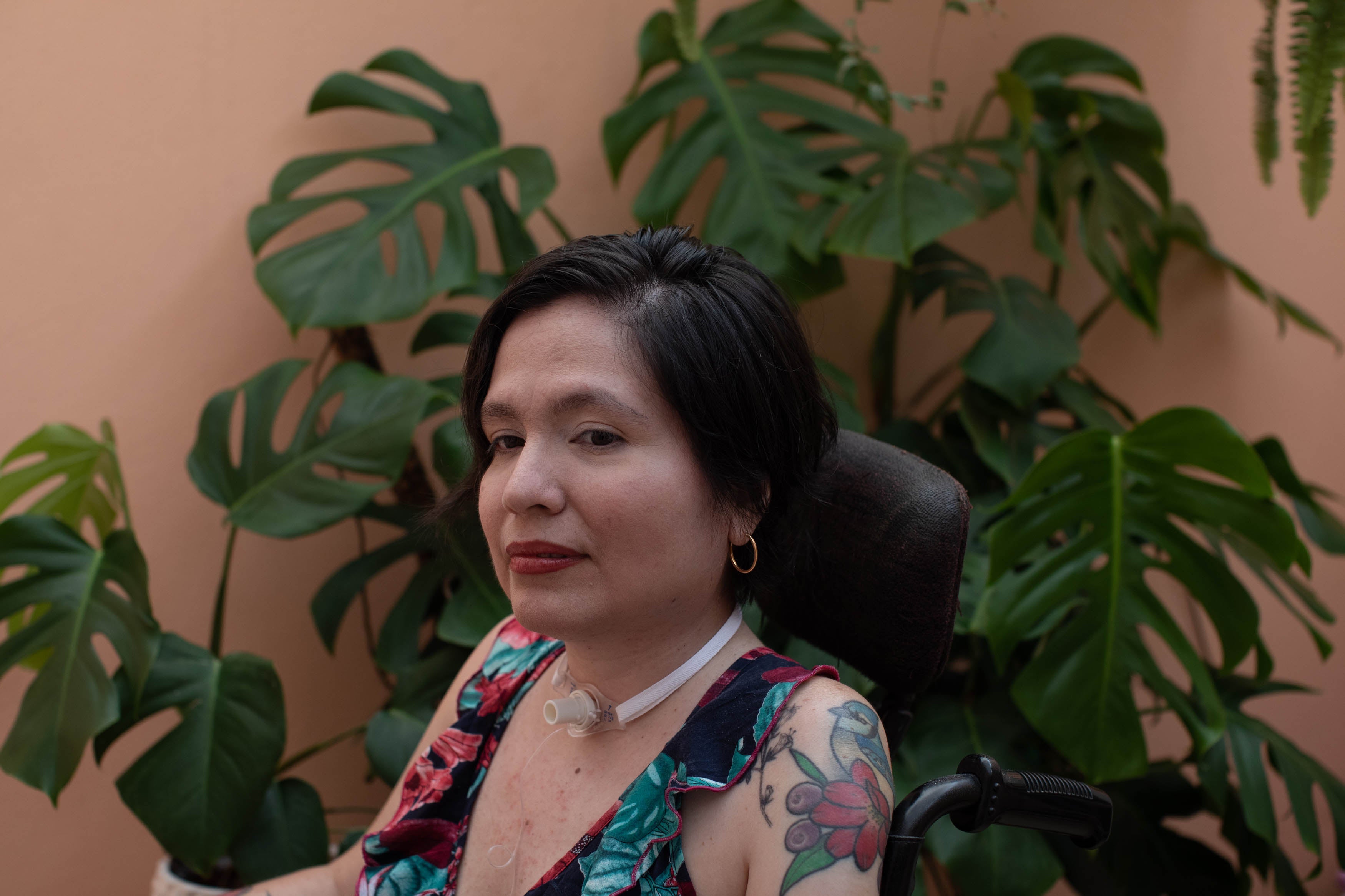
Now, lying in bed, with her nurse spoon-feeding her coffee, Estrada mouths a question: can they go outside for some fresh air?
The nurse, Gris Sandoval Damian, helps her into her wheelchair and puts on her white sneakers. Outside, they run into Estrada’s brother and nephew. The boy shows her a paper toy he has just made.
Sandoval directs the driver of a car to stop as Estrada crosses the street in her electric wheelchair en route to the Miraflores Malecon, an esplanade overlooking the ocean. The summer heat has cooled into the evening. Couples pack the esplanade holding hands. Children climb playground equipment. Teenagers whizz by on skateboards.
As Estrada and Sandoval reach the Malecon, a young woman approaches and asks for a photo.
“I always read you, and I study law,” she says. “I really admire you, Ana.”
Estrada, unable to say much, simply smiles and poses for the photograph. The young woman says she is from Cuzco. It wasn’t lost on Estrada that her case is being followed by a law student from across the country. Euthanasia was hardly discussed in Peru just a few years ago.
Sandoval takes a photo of Estrada’s shoulder so that she can see the tattoo where her eyes can’t reach. The nurse knows how much it means to Estrada to remember what she looks like in places she can no longer see. To find beauty in what she still can.
“Look, Anita, your bird,” the nurse says.
Estrada and her nurse stay out talking for more than an hour, well after dark, Sandoval easily reading Estrada’s lips after years of practice.
It strains Estrada’s muscles the longer she stays out, breathing without the ventilator. But it is worth holding on.
© The Washington Post
Join our commenting forum
Join thought-provoking conversations, follow other Independent readers and see their replies
Comments

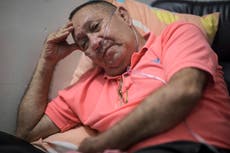

Bookmark popover
Removed from bookmarks